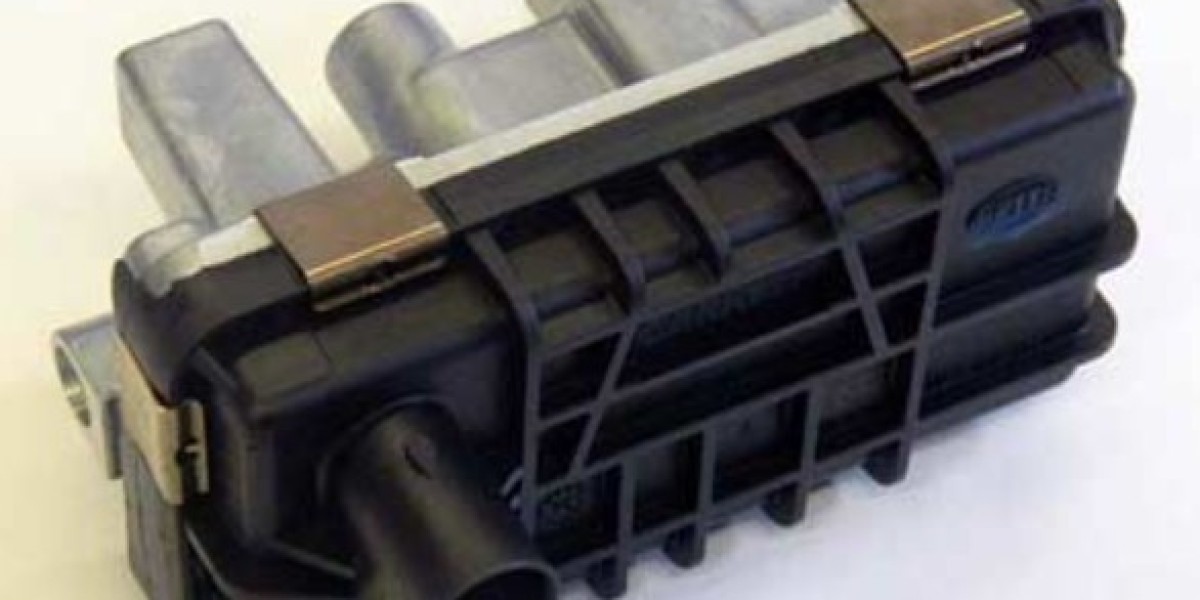Turbochargers are often celebrated as the heroes of modern engines, delivering extra power and efficiency without significantly increasing fuel consumption. But behind every turbocharged system lies a less visible yet equally important component—the turbo actuator.
The Basics of the Turbo Actuator
The turbo actuator is a small but critical device that manages the turbocharger’s wastegate or variable geometry vanes, depending on the type of turbo system. Its main purpose is to control how much exhaust gas reaches the turbine wheel, which in turn dictates how much compressed air enters the engine.
Think of it as the conductor of an orchestra: while the turbo produces the music (the boost), the actuator ensures the timing and intensity are perfectly balanced.
Types of Turbo Actuators
There are two main kinds of actuators commonly used in vehicles today.
Pneumatic Actuators
Operated by air pressure or vacuum.
Use a diaphragm and spring mechanism.
Open the wastegate when a certain boost threshold is reached.
Simple, durable, and often found in older or less complex systems.
Electronic Actuators
Powered and managed by the vehicle’s electronic control unit (ECU).
Rely on small electric motors and sensors.
Provide precise adjustments in real time.
More common in modern cars where efficiency and emissions control are a priority.
The move toward electronic actuators has allowed manufacturers to fine-tune engine performance to meet both driver demands and environmental regulations.
Why the Turbo Actuator Matters
The actuator may not draw as much attention as the turbocharger itself, but its role is vital. Here’s why:
Prevents Engine Damage – Keeps boost levels within safe operating ranges.
Improves Fuel Economy – Ensures the engine doesn’t burn excess fuel.
Enhances Acceleration – Provides smooth and consistent power delivery.
Supports Clean Combustion – Plays a role in lowering harmful emissions.
In short, it protects, optimizes, and refines engine performance.
Symptoms of a Faulty Turbo Actuator
When the actuator begins to fail, it disrupts the delicate balance of the turbo system. Some common warning signs include:
Poor Acceleration – The car may feel sluggish or unresponsive.
Boost Fluctuations – Inconsistent power, with sudden surges or drop-offs.
Excessive Smoke – Often a result of incorrect air-fuel balance.
Warning Lights – The ECU may trigger alerts when actuator readings are abnormal.
Limp Mode – Some vehicles restrict engine power to prevent damage.
If these symptoms occur, it’s advisable to find a specialist near you who can diagnose whether the actuator—or another part of the turbo system—is the cause.
Common Causes of Actuator Problems
While actuators are built to last, several factors can lead to trouble over time:
Heat Stress – Turbochargers operate under extreme temperatures, which can weaken components.
Carbon Deposits – Build-up of soot can restrict actuator movement.
Electrical Issues – In electronic actuators, wiring or sensor faults are common culprits.
Vacuum Leaks – In pneumatic systems, leaks disrupt proper function.
Wear and Tear – Like any moving part, actuators eventually degrade.
Recognizing these causes helps drivers understand why timely inspection and care are important.
How the Actuator Affects the Driving Experience
Drivers often underestimate the influence of the turbo actuator on everyday driving. For example:
On city streets, it ensures power delivery is smooth and controlled.
On motorways, it helps maintain efficient cruising with steady boost levels.
During overtaking, it enables quick, confident bursts of acceleration.
Without the actuator keeping things in check, the turbocharger would either underperform or overwork, leading to an unpredictable and less enjoyable drive.
Evolution of Turbo Actuators
Turbo actuator design has advanced significantly over the years.
Traditional Wastegate Actuators – Simple, spring-loaded units that controlled boost mechanically.
Electronic Actuators – Offering real-time precision for both performance and emissions compliance.
Next-Generation Systems – Emerging designs include actuators integrated into electrically assisted turbochargers, reducing turbo lag to almost zero.
These changes reflect how crucial actuators have become in modern vehicle engineering.
Tips for Keeping a Turbo Actuator in Good Shape
While actuators generally don’t require frequent maintenance, good driving and servicing habits can help prolong their life:
Service the Vehicle Regularly – Routine checks can catch developing issues early.
Use Quality Fuel and Lubricants – Prevents deposits that can restrict actuator operation.
Allow Cooling Time – Letting the engine idle briefly after long drives reduces heat stress.
Avoid Harsh Driving on Cold Engines – Gentle driving helps keep turbo components, including the actuator, healthy.
These steps won’t just benefit the actuator, but the entire turbo system.
The Future of Turbo Actuators
As car manufacturers move toward stricter emissions standards and more hybridized engines, actuators are expected to become even more sophisticated. Future models may:
Integrate with electric turbochargers for instant boost.
Offer self-diagnosis features, warning drivers of developing faults.
Be built from advanced materials to better handle heat and pressure.
This ongoing evolution ensures that turbocharged engines remain relevant in an era of cleaner, more efficient mobility.
Conclusion
The turbo actuator may be small, but its impact on engine performance is significant. By controlling boost pressure, it ensures safety, efficiency, and reliability. From preventing engine damage to providing smooth acceleration, its role is central to the way modern vehicles drive.
As turbo technology continues to advance, so too will actuators, making them an indispensable part of engines for years to come.






